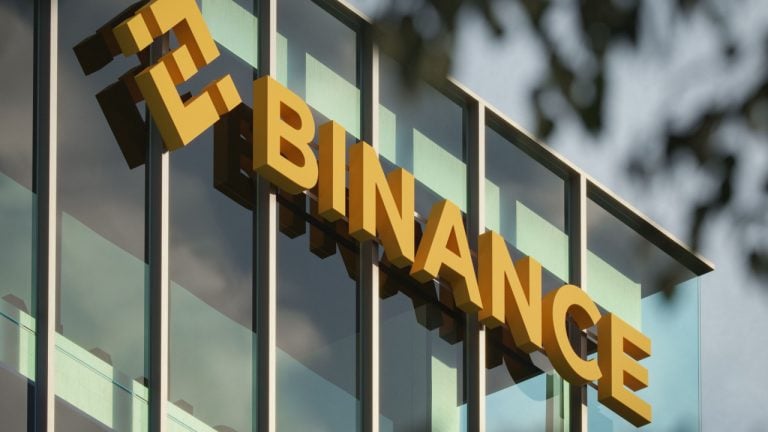Understanding Modular Blockchains: A Definition from CoinGecko
September 7, 2024 | by stockcoin.net


What if we could enhance blockchain efficiency by rethinking its fundamental structure?

🚨Get your crypto exchange secret bonus right now.🚨
Understanding Modular Blockchains
Modular blockchains represent a significant innovation in the landscape of blockchain technology, challenging the traditional paradigm that has governed the industry for years. By dissecting the key functionalities of blockchain into distinct and specialized segments—Execution, Settlement, Consensus, and Data Availability—this approach has the potential to accelerate performance and scalability in ways that monolithic blockchains have struggled to achieve.
The traditional monolithic blockchains have a single chain tasked with managing all essential functions. However, modular blockchains introduce a refreshing perspective that allows for increased specialization and optimization of each function. For those of us involved in or closely following the cryptocurrency domain, understanding the implications of modular blockchains is paramount.
What Are Modular Blockchains?
The Core Concept
At its essence, a modular blockchain breaks down the essential components of blockchain technology into discrete units. Each unit or module is responsible for a dedicated aspect of blockchain functioning. This architecture allows each module to be highly specialized, fostering improvements in efficiency and performance across the network.
In contrast to traditional blockchains, which bundle all functionalities into one monolithic system, modular blockchains delineate these responsibilities. For example, a blockchain that uses the RollApps framework, such as Dymension, can hand off specific tasks—like Data Availability—to other blockchains designed solely for that purpose, such as Celestia.
| Function | Traditional Monolithic Blockchain | Modular Blockchain |
|---|---|---|
| Execution | Integrated within one chain | Handled by specialized chains |
| Settlement | Integrated within one chain | Handled by specialized chains |
| Consensus | Integrated within one chain | Handled by specialized chains |
| Data Availability | Integrated within one chain | Handled by specialized chains like Celestia |
This modularization optimizes not only the functioning of individual blockchains but also enhances the whole ecosystem, resulting in a more scalable and efficient environment.
Key Features of Modular Blockchains
- Specialization: Each chain focuses on a specific function, allowing it to optimize that function without the need to balance multiple responsibilities.
-
Interoperability: Different specialized chains can communicate and transact with one another seamlessly, enhancing the overall network’s ability to handle complex operations.
-
Scalability: By distributing the workload across multiple chains, modular blockchains can scale more effectively compared to traditional designs.
-
Flexibility: Developers can innovate and deploy new functionalities without needing to create a full-stack blockchain from scratch.

🚨Get your crypto exchange secret bonus right now.🚨
Implications of Modular Blockchains
Evolution of Traditional Blockchains
The emergence of modular blockchains does not signal the end of traditional blockchains; rather, it indicates an evolution within the sector. Projects like Ethereum, once strictly monolithic, are incrementally adopting modular characteristics. With each upgrade—such as the noteworthy Dencun update—the Ethereum network is effectively promoting a modular structure by enabling different components to interact and collaborate without being constrained by the limitations of a single chain.
This shift enhances Ethereum’s capacity to process transactions, accommodating a higher volume of users and applications. Consequently, the evolution of Ethereum might serve as a case study for other blockchain developers experiencing similar transitions.
Real-World Examples
Several projects provide striking illustrations of how modular blockchains are currently being engineered:
- Celestia: Offering a dedicated infrastructure for Data Availability, Celestia allows various applications to interact without compromising data integrity, fundamentally altering how blockchain communication occurs.
-
Dymension: By employing a framework known as RollApps, Dymension separates the primary functions of blockchain and ensures optimized performance in Consensus, Execution, and Settlement. It also successfully channels Data Availability responsibilities to specialized networks.
Benefits of Modularity
-
Improved Efficiency: Each specialized blockchain’s capacity to focus solely on its tasks leads to enhanced performance and less congestion.
-
Accelerated Development: Developers can innovate on modular blockchains with greater ease since they do not need to construct a fully integrated blockchain from scratch.
-
Lower Costs: The ability to outsource certain functions means that projects can save on resources that would otherwise be spent developing monolithic systems.
Challenges Ahead
Transitioning from a monolithic design to a modular structure is not without its complexities. Integrating different chains requires comprehensive planning and execution, and the need for standardization can pose challenges as new modular chains emerge. Coordinating cross-chain interactions also necessitates secure and reliable protocols, risking fragmentation of the community if not handled effectively.
Conclusion
As we stand at the crossroads of blockchain evolution, modular blockchains offer us a compelling vision of what the future holds. With their ability to separate functions into specialized chains, they promise scalability, flexibility, and performance improvements that could redefine the rules of blockchain technology.
By recognizing the merits and challenges of modular designs, we position ourselves to engage in the dialogue about the future of cryptocurrencies and distributed ledgers, embracing the potential of these innovations in our professional endeavors.
In the coming years, as more projects embark on the modular path, we will witness a transformation of the landscape. By understanding these emerging technologies, we empower ourselves to navigate the increasingly complex world of blockchain, leading to more informed decision-making and fostering innovation across the ecosystem.
As we venture forth, we invite thought leaders, developers, and enthusiasts to join in the shared exploration of these advancements, as together we define how modular blockchains will shape the future of our digital economy.
🚨Get your crypto exchange secret bonus right now.🚨

RELATED POSTS
View all



